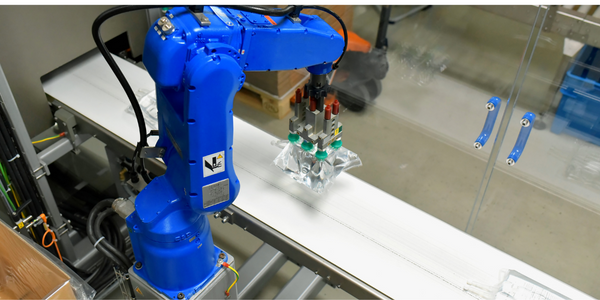Download PDF
Victory Through Innovation: Winning the Race and Staying Sustainable with Altair Solutions
Technology Category
- Cybersecurity & Privacy - Intrusion Detection
- Functional Applications - Manufacturing Execution Systems (MES)
Applicable Industries
- Life Sciences
Applicable Functions
- Product Research & Development
Use Cases
- Manufacturing Process Simulation
- Structural Health Monitoring
The Challenge
Elisava Racing Team, a project of final year students at ELISAVA Barcelona School of Design and Engineering, had the challenge of designing and developing an electric motorcycle to compete in the Barcelona Smart Moto Challenge. The team had already optimized important structural parts of their previous designs, “ERAY” and “Dayna,” but wanted to take their latest design “Dayna EVO” a step further. The team aimed to create a 100% electric off-road motorcycle with an IoT connection and a medical service capability. They sought to improve the bike’s safety, comfort, and structural behavior, aiming for a lighter, simpler bike. To achieve this, they needed simulation tools to generate shapes, predict material behavior, and optimize manufacturing processes for the fully electrified motorbike.
About The Customer
Elisava Racing Team was established in 2018 at ELISAVA Barcelona School of Design and Engineering. The team is composed of final year students who took on the challenge of designing and developing an electric motorcycle to compete in the Barcelona Smart Moto Challenge, an international competition held annually in Catalonia. The competition focuses on sustainable mobility, with university teams from around the world competing in an off-road race using self-engineered electric motorcycles. The team has achieved outstanding race results by using Altair solutions to optimize several structural parts of their bike. In 2019, the team won five awards with the electric motorcycle “ERAY” and continued its success in 2020 with the motorcycle “Dayna”.
The Solution
The team used topology optimization using Altair® Inspire™ to optimize the design of several structural parts while achieving maximum weight reduction. They began by analyzing the original chassis’ performance. For the aluminum subframe, they applied Inspire to minimize the structural assembly’s weight and used Altair® Inspire™ Print3D to optimize the manufacturing process. To design the bike’s swingarm, they studied three main load cases and performed various iterations with Inspire to generate the geometry with an optimal shape. For the carbon fiber handlebars, they used Altair® HyperWorks® to optimize the composite material by modifying the number of layers to achieve the desired performance. Finally, they used HyperWorks to simulate the new parts and complex assemblies and evaluate their performance in different racing scenarios.
Operational Impact
Quantitative Benefit
Related Case Studies.

Case Study
Corporate Identity Solution Adds Convenience to Beckman Coulter
Beckman Coulter wanted to implement a single factor solution for physical and remote logical access to corporate network. Bechman Coulter's users were carrying smart card badges for doors, but also needed a one-time password token to access to our corporate network when they were not in the office. They wanted to simplify the process.

Case Study
Embracing Business Success in Real Time
· Increase control over growing Big Data to improve business decisions · Manage data for 28,000 biotechnology stockkeeping units in the fields of microbiology, molecular biology, animal cell cultures, plant tissue cultures, and lab ware for laboratory chemicals · Accelerate report generation and analysis with real-time data

Case Study
Flow Robotics: Scaling Up Production and Accelerating Product Development with IoT
Flow Robotics, a Danish manufacturer, developed flowbot™ ONE pipetting robots to alleviate the strain on bioanalysts in life-science laboratories and hospitals across Europe. These robots were designed to automate part of the testing process, speeding up the time it takes to produce results and reducing pressure on staff. However, the company faced challenges in scaling up production and accelerating product development. High workloads and physically challenging conditions have long been an issue for laboratory professionals. Flow Robotics estimates that around half of medical lab technicians carry out the same arm movements for at least a quarter of their working day. The American Society for Clinical Pathology reported that 85% of laboratory professionals feel burnt out; 36% struggle with inadequate staffing; and 32% face a heavy workload and pressure to complete all testing on time.

Case Study
Revolutionizing Aerospace Industry with 3D Printing: A 63% Lighter Titanium Part
GE Aviation, a renowned name in the aerospace industry, recognized the potential of 3D printing technology in transforming the sector. The primary challenge was to reduce the weight of the aerospace parts, which would directly impact the fuel costs. A lighter airplane would mean lower fuel consumption, leading to cost savings and a smaller carbon footprint. However, achieving this weight reduction without compromising the strength and functionality of the parts was a significant challenge. Traditional manufacturing methods were not able to provide the desired weight reduction while maintaining the required stiffness and strength of the parts. The challenge was to find a solution that could create strong, light, and functional aerospace parts.
Case Study
Material Intelligence at Ethicon: Sustaining Medical Device Manufacturability and Improving Patient Care
Ethicon, a world-class medical devices company, faced several challenges in its operations. The rapid selection of manufacturing materials compliant in global markets was critical to assure patients, practitioners, and purchasing organizations of the biocompatibility of their medical devices. Ensuring supply chain continuity and minimizing risks of obsolescence for medical devices due to regulatory changes were also crucial in meeting Ethicon’s ongoing commitment to maintaining patient care. Furthermore, the engineers at Ethicon were developing the next generation of medical devices and needed to access historical material data to accelerate new product development. The process of centralizing and digitalizing its materials information was a significant challenge that Ethicon needed to overcome.
Case Study
IWT's Transformation: Customizing with Efficiency in IoT
IWT, a company specializing in the design, manufacture, and installation of washing systems for the life sciences and pharmaceutical industries, faced a significant challenge in managing its wide product portfolio. The company manufactures 45 different models, 60% of which are customized to some degree. This high level of customization, combined with limited production quantities, necessitated a controlled process for managing the release of engineering changes. The goal was to achieve efficiency, reduce process time, and better coordinate production throughout the organization. The need for strict compliance in heavily regulated industries further complicated the situation. IWT's existing PLM journey with Dassault Systèmes’ SOLIDWORKS for 3D CAD and Enovia for managing CAD data and Bills of Materials (BOMs) was proving inadequate. The system had limited part classification, no workflow, and no tool to ensure data consistency. The management of non-CAD documents was also a challenge, with information often difficult to find and access.





